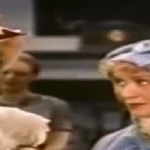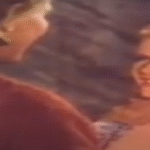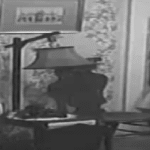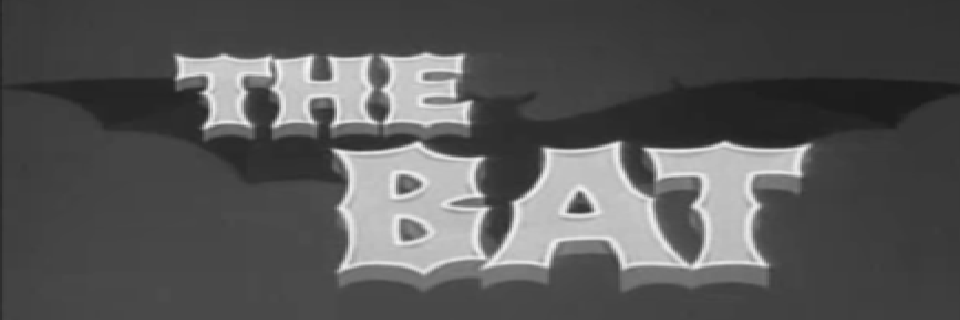The Bat, directed by Crane Wilbur and released in 1959, is a mystery thriller with elements of horror, featuring Vincent Price and Agnes Moorehead in leading roles. The film is based on Mary Roberts Rinehart’s 1908 novel The Circular Staircase and the 1920 stage play The Bat, co-written by Rinehart and Avery Hopwood. It combines the atmospheric suspense of a haunted house mystery with the traditional whodunit format, delivering a tale of greed, murder and hidden identity.
The story centres on Cornelia Van Gorder, a successful and independent crime novelist who rents a large, remote mansion known as The Oaks, located on the outskirts of a small town. Miss Van Gorder, played by the formidable Agnes Moorehead, is intelligent, composed and more than capable of handling herself despite the ominous surroundings. She is accompanied by her loyal housekeeper, Lizzie Allen, who brings both comic relief and caution to the eerie setting.
Almost immediately after Miss Van Gorder settles into the estate, the townspeople begin whispering of a criminal mastermind known only as “The Bat”, a mysterious figure suspected in a series of murders and thefts. The Bat is said to wear a dark mask, strike without warning and vanish without a trace, leaving behind no clues save for the dread he instils. As the legend grows, so does the tension in the community. It is suggested that The Bat may be after a hidden fortune, a cache of stolen money embezzled from the local bank.
Dr Malcolm Wells, portrayed by Vincent Price, is a seemingly respectable physician with a calm manner and a professional detachment that belies deeper motives. He becomes a key figure in the unfolding drama when it is revealed that he was involved in a suspicious accident that resulted in the death of the bank president, John Fleming. Fleming had previously confessed to Wells that he had stolen a large sum of money from the bank and hidden it in a secure location. After Fleming’s sudden and violent death, suspicion begins to mount, and Wells’s enigmatic behaviour draws scrutiny from both the authorities and Miss Van Gorder herself.
As the story develops, Miss Van Gorder becomes increasingly involved in uncovering the truth behind The Bat’s identity and the location of the stolen money. Despite warnings and threatening letters, she refuses to leave The Oaks, determined instead to unmask the criminal and bring order to the chaos. She employs both her wit and her experience as a mystery writer to piece together the clues, demonstrating a level of bravery and ingenuity uncommon for female characters of the era.
Throughout the film, a variety of characters are introduced, each with their own secrets and potential motives. These include Lieutenant Andy Anderson, a police officer investigating the recent string of murders; Judy Hollander, Fleming’s former secretary, who may know more than she admits; and Mark Fleming, John Fleming’s nephew, who is a key suspect in the case. The interplay between these characters creates a classic closed circle mystery, where nearly everyone has a reason to lie and trust is in short supply.
Much of the action takes place within the mansion itself, which functions almost as a character in its own right. With its long hallways, creaking floorboards and secret passageways, The Oaks is a quintessential Gothic setting. Shadows loom large, strange noises echo through the halls at night and windows mysteriously open and close. These elements heighten the sense of isolation and dread, contributing to the film’s suspenseful atmosphere. The film makes excellent use of light and shadow, with cinematography that evokes the classic horror style of the 1930s and 40s, yet with a polished, modern sensibility for its time.
Vincent Price’s portrayal of Dr Wells is particularly noteworthy. Though not the central character, his presence looms large. Known for his ability to balance sophistication with menace, Price plays Wells as both courteous and unsettling. His intentions remain ambiguous for much of the film, as he oscillates between concerned doctor and potential villain. His measured delivery and occasional sly smile keep audiences guessing as to whether he is an innocent bystander or deeply complicit in the crimes.
Agnes Moorehead, meanwhile, carries the film with poise and intelligence. Her Cornelia Van Gorder is never reduced to a damsel in distress; instead, she is a proactive figure who guides much of the investigation. Moorehead imbues her with sharp wit and resilience, offering a strong counterpoint to the paranoia and fear engulfing the town.
As the murders continue and the identity of The Bat remains unknown, the film draws closer to its tense final act. The mansion becomes a pressure cooker of fear and suspicion, with Miss Van Gorder and Lizzie setting traps and staying vigilant through the long nights. Eventually, it is revealed that The Bat is not a supernatural figure, but a very real and greedy individual hiding behind the mask to further their own agenda.
The reveal, though somewhat abrupt, ties together many of the film’s narrative threads. It is a classic mystery resolution, in which misdirection, false identities and greed are shown to be at the heart of the violence. Rather than an external evil, The Bat symbolises the corruption within the community, the lengths people will go for wealth and the ease with which fear can be manipulated.
Despite its relatively modest production values, The Bat benefits from a taut script and confident direction. The pacing remains brisk, with just enough exposition to clarify the story without slowing the suspense. The dialogue is crisp and occasionally laced with dry humour, particularly in the exchanges between Miss Van Gorder and Lizzie. The film avoids excessive gore, relying instead on mood and suggestion, which allows it to maintain a timeless quality even as horror cinema moved towards more explicit content in later decades.
The 1959 adaptation of The Bat is often regarded as a stylish, if somewhat underrated, gem of mid-century suspense cinema. It draws on classic mystery traditions while incorporating horror elements that appeal to fans of both genres. The performances, particularly by Moorehead and Price, elevate the material, and the setting provides a rich backdrop for a story driven by secrecy, deception and the human capacity for treachery.







